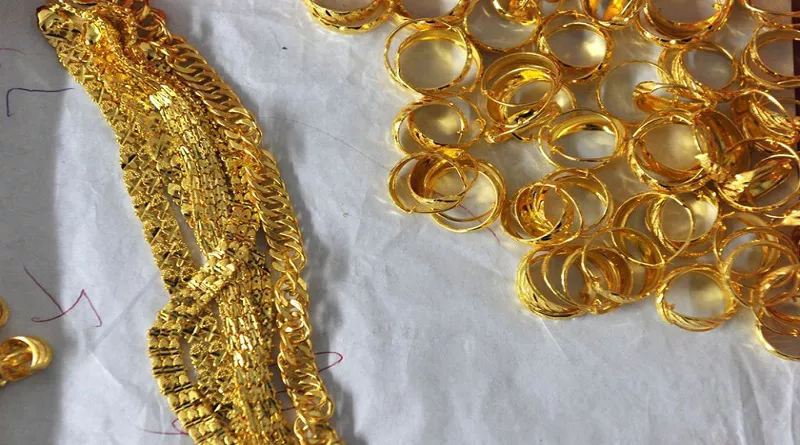Investing in a gold chain is a significant decision, and ensuring its authenticity is paramount. In this comprehensive guide, we explore practical methods to discern whether a gold chain is real or counterfeit. From visual inspections to professional assessments, understanding the key indicators of genuine gold can empower buyers to make informed and confident purchases.
1. Visual Inspection: The First Line of Defense
A careful visual examination is the initial step in determining the authenticity of a gold chain.
Hallmarks and Stamps: Authentic gold chains typically bear hallmarks or stamps indicating purity and authenticity. Common stamps include 24K for pure gold, 18K, and 14K for lower karatages.
Consistency in Color: Real gold maintains a consistent color throughout the piece. Any variations or spots of discoloration may indicate a non-gold metal beneath the surface.
2. Magnet Test: Distinguishing Non-Magnetic Gold
Gold is not magnetic, making the magnet test a simple yet effective method to assess authenticity.
Non-Magnetic Response: Genuine gold does not attract a magnet. If the chain exhibits magnetic properties, it likely contains other metals or is not gold.
3. Density Test: Authenticating Through Weight
Gold is notably dense, and a density test can provide insights into the chain’s authenticity.
Weight Comparison: Compare the weight of the gold chain to a known quantity of gold. If the chain feels unusually light for its size, it may be an indication of lower gold content or a counterfeit.
4. Acid Testing: Professional Assessment of Purity
Acid testing involves using specific acids to determine the karat purity of the gold.
Color Reaction: Different acid solutions react with gold in distinct colors. A jeweler applies the acids to the chain, observing color changes to ascertain its purity.
5. Hallmark Research: Deciphering Stamp Authenticity
Researching and understanding hallmarks aids in verifying the authenticity of gold jewelry.
Reference Guides: Utilize reference guides or online resources to cross-verify hallmarks and stamps. Counterfeit pieces may have inaccurate or inconsistent markings.
6. Professional Appraisal: Seeking Expert Opinion
Engaging a professional jeweler for an appraisal provides a thorough assessment of the gold chain’s authenticity.
X-Ray Fluorescence (XRF): Jewelers may use XRF technology to analyze the composition of the metal without causing damage, providing accurate information about the gold’s purity.
7. Acid Etching: A Risky Last Resort
While not recommended, acid etching can be a last resort for those willing to risk minor damage for conclusive results.
Hidden Area Testing: Apply a small amount of acid to an inconspicuous area. Authentic gold will not be affected, while counterfeit pieces may show signs of discoloration or fading.
Conclusion: Empowering Buyers with Knowledge
In conclusion, identifying a real gold chain involves a combination of visual inspections, basic tests, and, when necessary, professional assessments. Buyers should be cautious and employ multiple methods to ensure the authenticity of their investment. Understanding hallmarks, performing simple tests, and seeking expert opinions empower individuals to make confident decisions when purchasing gold jewelry.
Investing time in thorough research, relying on reputable sellers, and being aware of common counterfeit practices can significantly reduce the risk of acquiring fake gold chains. By arming themselves with knowledge, buyers contribute to a market where authenticity is valued, ensuring their gold investment is a genuine and lasting addition to their collection.

